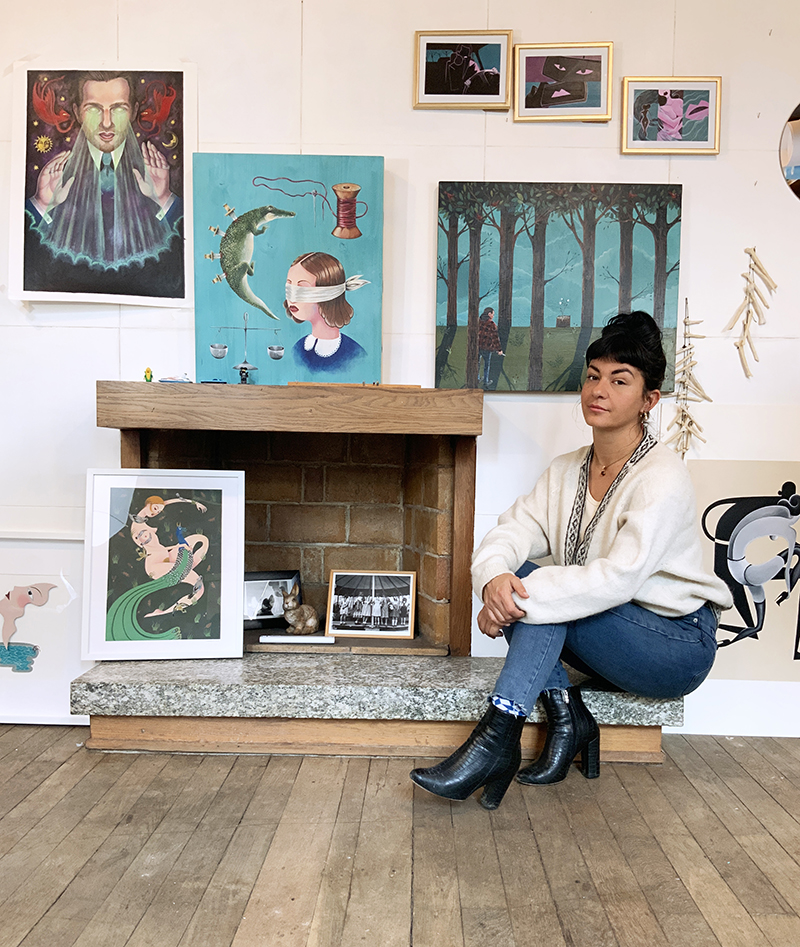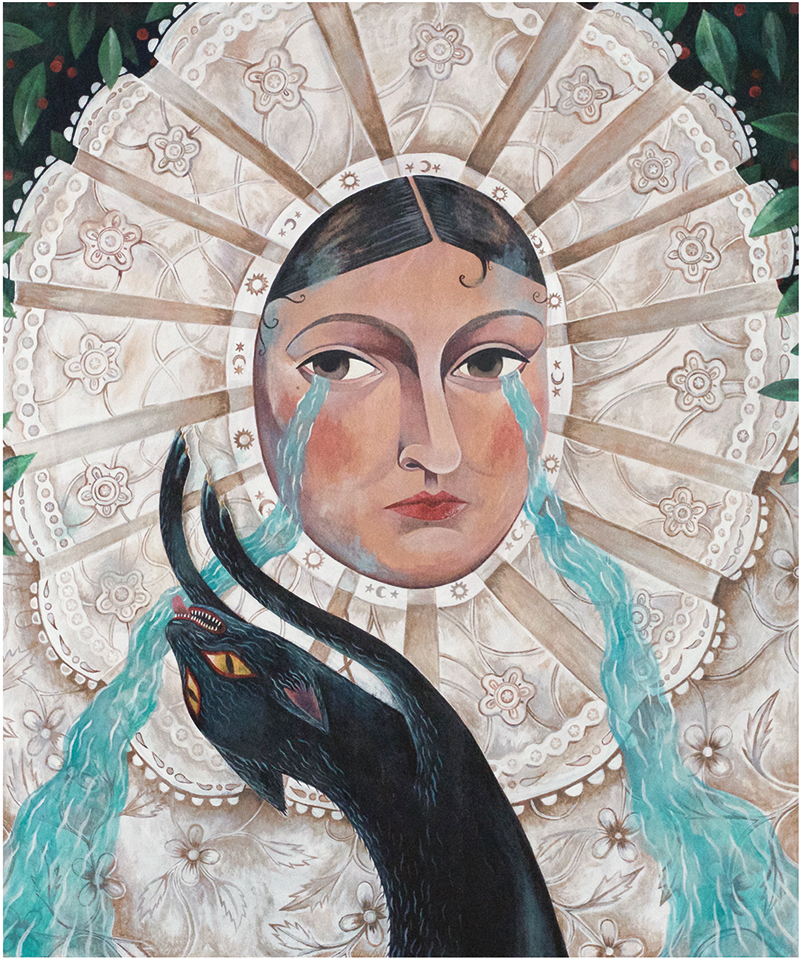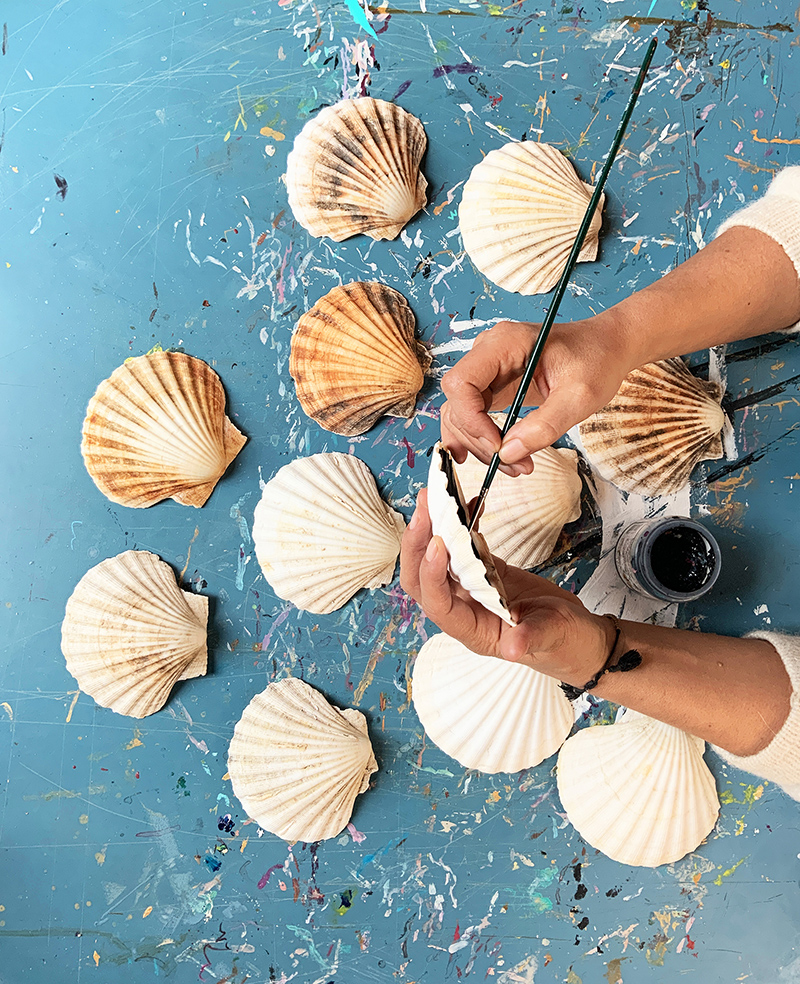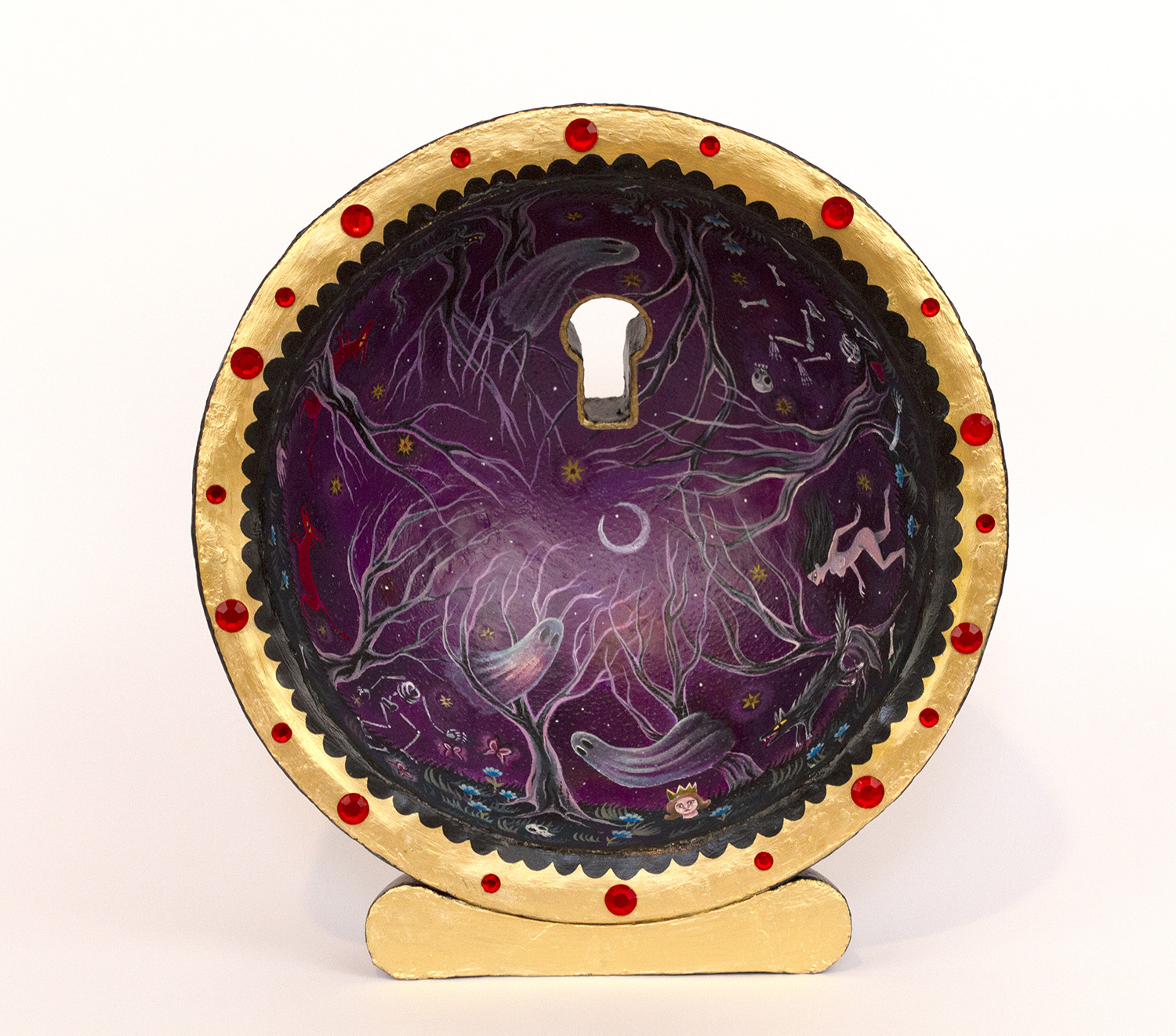Art plays an important role in human history. It is a testimony of an age. So, maybe, one of the roles of an artist is to be a witness. Our role may also be to generate ideas and images that are not materially useful but that awaken or provoke something in people.
For “mental realist” Cecile Giovannini, if you do not forget the pleasure that art provides and stay true to your values you are on the right path.

Please tell us a little about yourself. What brought you to the world of art and how did you start?
I grew up in a family where imagination and curiosity occupied a big place. Thanks to this, I developed my inner universe. When I was little, art was my refuge, my secret language. I escaped reality by dreaming of being an artist. When it was necessary to choose a trade, it was clear to me that I had to move towards art. I knew that in our society, it would be a difficult choice requiring a lot of work for not a very certain result. So, I naturally turned to an art school.
After graduating I became an assistant to two artists: conceptual artist Andzej Bednarczyk and graphic artist Randy Duburke, whose work is featured by Marvel. I learned a lot from them. Then I started to make my own way slowly by participating in exhibitions and working for clients.
What is the primary role of an artist? How do you describe yourself in the context of challenging people’s perspectives via your work and art?
Art is for me a way to understand the world, people, and nature. We make impossible hypotheses, we try to capture the mysterious and peer into the grand secret. As an artist, I hope that I can move people. We don’t know how it works, it’s the mystery of what moves us or not. It’s about subjectivity and sounds like alchemy. Art plays an important role in human history. It is a testimony of an age. So, maybe, one of the roles of an artist is to be a witness. Our role may also be to generate ideas and images that are not materially useful but that awaken or provoke something in people.

Frida and me.
How do you deal with the conceptual difficulty and uncertainty of creating work?
It is an anguish that sometimes overwhelms me. Time is the master in a society, where it is necessary to produce. With experience, I am slowly becoming better able to deal with this.
Let’s talk about your frameworks, references and process. What inspires you?
I feed my universe with many different things. The connection between body and nature is ever present in my work. Tales, fables, sacred art are great sources of inspiration to me. The strong symbols in there belong to a universal language. They are like archetypes that allow us to interpret concepts that we cannot express with words.
What would you call your style?
Mental Reality. Bednarczyk once described my style with those words. It’s a realistic picture of my inner universe. I like this definition.

Coquelicots (poppies).
Let’s talk about the evolution of your practice over the years. Tell us about your commitment to your current medium.
It took me a long time to find my artistic identity. I think this is the path of a lifetime. At the beginning of my journey I tried a lot of different techniques and styles. But the medium of painting and especially of colour is what moves me the most. I like to experiment and see how the medium changes our perception of the work. In the future I’d like to experiment with other forms of expression. Let’s say I’d like to do everything: movies, animations, installations, and comics. Life is long and I’ll do everything in its own time. Right now it’s mostly painting.
Think of the biggest professional risk you have taken. What helped you take that risk?
I thought it was when I stopped teaching so I could completely immerse myself in my career as an artist. I really appreciated the contact with students and the exchange of ideas that happened. But at one point I thought that if I didn’t devote myself a hundred percent to my art I wouldn’t be able to evolve as I would like. That was the first risk I took. The first few months were difficult. Many people around me told me that I will not be able to do it and that it is too risky financially. But I held on and the universe might have conspired to help me.

What is the best piece of advice you have received? Why was it helpful?
A friend of mine, who is a great and successful artist, Ugo Gattoni, told me that art is pleasure, that we must not forget it. If we create with pleasure then people feel this pleasure. I think that it was a good piece of advice because sometimes you have issues that surround your work: having to earn a living, wanting to please someone and so on. And these things sometimes make us forget the primary reason that pushed us to art: the pleasure we feel when creating.
Tell us about your studio, what kind of place is it? Could you describe your usual work day in the studio?
My studio is a cozy place with a window overlooking the street in a small town in an alpine valley in Switzerland. In this country there are still many things to change to bring art into people’s lives. It’s a challenge as well as a thrill.
I share the studio with other creative people. It’s important for me to be surrounded by caring people with whom I can share. It is also necessary for me to be surrounded by people who engage in a different activity than mine, like video, animation, scenography, and communication. When I get to my studio, I make a large thermos of sugar-free black tea. Then I choose what will accompany my day: music, podcast or silence. I love listening to podcasts when I create. It’s like someone is telling me a story.

Les sirènes (mermaids).
How do you resolve the conflict between the creative and the commercial? How does your interaction with a curator, gallery or client evolve?
According to me, the main point is not to betray my values. There are customers I can’t work for. But commercials collaborations can be great experiences if they respect the artist’s values. There is an exchange of ideas. It is also a way of exchanging knowledge. There is a beautiful collaboration, for example, between haute-couture and art, or between music and visual art. The important thing is to take pleasure and respect our values.
What was your first sale? Do you handle the commercials yourself or is it outsourced to a gallery or an agent?
I had an experience with an agent years ago, but it wasn’t very conclusive. After that, I been working on my own. This solo experience was useful for me as it gave me confidence and a better understanding of my limits.
My work is about to be represented by Lucile Airiau, who specialises in artistic communication. She is a young creative professional and I like her vision of art. I am delighted with this collaboration.
What are you working on now? What’s coming next season?
I’m getting on with my shell artworks series. I’m also working on my first graphic novel, a project for which I receive an incentive award. It’s long-term work. I would also love to be part of an artistic residency. For the first time since a while I don’t have a specific plan. I let opportunities come to me. Let’s be surprised!
For enquiries contact agent: lucile.airiau@gmail.com












Add Comment